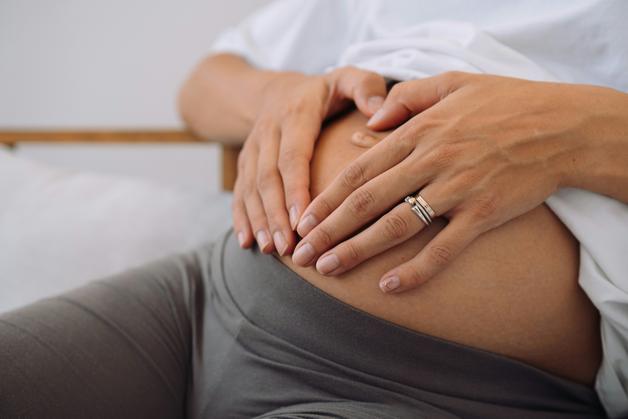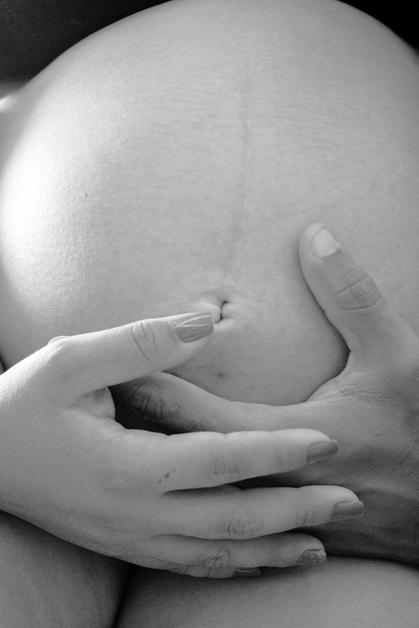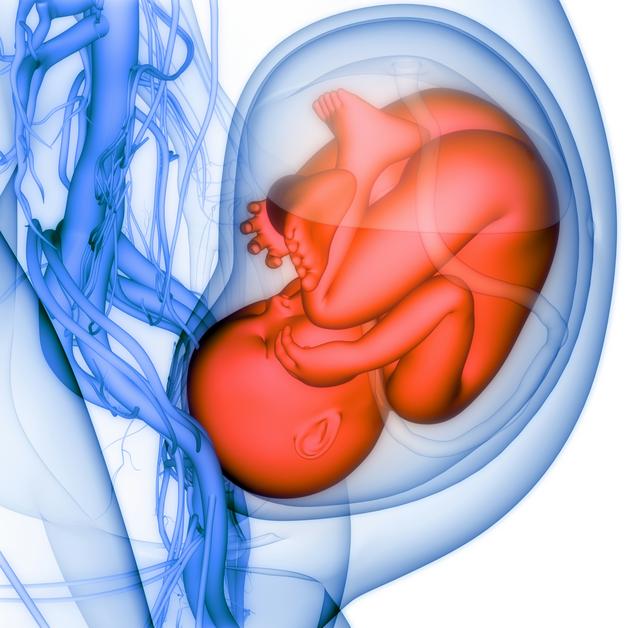The sensation of lower abdominal pain during pregnancy can arrive unannounced—a subtle tug, a fleeting sharpness, a slow ache creeping across your pelvic area. For new and experienced parents alike, these moments often spark a torrent of questions. Is this normal? Should you rest or seek help immediately? Balancing the anticipation of pregnancy with the discomforts—sometimes bewildering—of your changing body isn’t straightforward. Every twinge can cast a shadow of worry, yet awareness and the right information can illuminate the way forward, reducing anxiety and offering genuine relief. Unpacking the realities behind lower abdominal pain during pregnancy, distinguishing everyday symptoms from true warning signals, and identifying strategies for comfort empowers you to navigate each trimester with greater peace of mind.
What creates this discomfort? How should you react when pain intensifies or shifts unexpectedly? Which symptoms deserve urgent attention? Below you’ll find answers, from anatomical shifts and hormonal cascades to actionable relief tips.
Anatomy and physiology: what’s happening beneath the surface?
Pregnancy transforms your anatomy at an astonishing pace. Imagine your uterus—once compact and unobtrusive—expanding steadily to welcome new life. This expansion, powered by stretching round ligaments and a surge of hormones (notably progesterone and relaxin), sets several changes in motion:
- Ligament stretching: As the uterus rises from the pelvic cavity, it stretches adjacent ligaments—particularly the round ligaments. This often triggers brief, sharp cramps, especially after rapid movement or shifting position.
- Hormonal softening: Elevated levels of hormones like relaxin loosen the connective tissues in your pelvis, easing birth later but also increasing joint laxity and potential for pelvic girdle pain.
- Digestive slowdown: Hormones slow down gastrointestinal motility, allowing more nutrients for your baby but also predisposing you to constipation, bloating, and gas.
- Abdominal musculature adaptation: Core and lower back muscles realign under the weight of your growing bump, sometimes provoking muscle fatigue or postural strain.
This physiological symphony, an incredible recalibration of your entire system, is the primary backdrop for lower abdominal pain during pregnancy.
Common causes: normal, expected, and sometimes uncomfortable
Not all pain means trouble. Many sources of lower abdominal pain during pregnancy reflect the ordinary adaptation process:
Physiological adaptations
- Round ligament pain: Typically felt as fleeting, cramp-like, or stabbing discomfort localized in the groin or lower belly, often triggered by sudden motion or even a sneeze.
- Muscle stretching: As abdominal muscles stretch and thin, many parents experience a dull ache, sometimes aggravated by walking, standing, or prolonged activity.
- Braxton Hicks contractions: Sometimes called “practice contractions,” these feel like a tightening in your abdomen—irregular and often painless but occasionally uncomfortable as your pregnancy progresses.
- Digestive complaints: Sluggish bowels can translate to abdominal cramping, pressure, and even sharp gas pains.
- Fatigue and poor posture: Increasing body weight shifts your center of gravity, increasing muscle fatigue, especially late in the day.
Medical concerns to watch
Markers for something amiss can be subtle or abrupt. It’s essential to distinguish routine discomfort from warning signs:
- Urinary tract infections (UTIs): Pelvic pain paired with burning urination, urgency, and sometimes fever suggests a UTI—seek prompt evaluation, as untreated infections can increase risks during pregnancy.
- Ectopic pregnancy: Sharp, unilateral pain with vaginal bleeding and possibly dizziness or shoulder pain, usually early in pregnancy—a medical emergency.
- Miscarriage: Lower abdominal pain with vaginal bleeding, particularly in the first trimester, demands immediate consultation.
- Placental abruption: Sudden, severe pain in the second or third trimester—sometimes with bleeding, sometimes not—may suggest the placenta is separating from the uterine wall. This constitutes an emergency.
- Preterm labor: Recurrent abdominal pain or regular tightening before 37 weeks, possibly with backache, pelvic pressure, or increased discharge, always deserves prompt assessment.
- Appendicitis or ovarian torsion: Rare but possible, presenting as escalating localized pain, potential vomiting, and general malaise.
Key symptoms to monitor: what accompanies lower abdominal pain during pregnancy?
The presence—or absence—of certain symptoms provides valuable diagnostic clues. Consider these Red Flags:
- Vaginal bleeding: Any more than minor spotting, with or without pain
- Painful urination, fever, or chills: Suggestive of infection
- Unusual vaginal discharge: Especially if green, foul-smelling, or pus-like
- Decreased fetal movement: Particularly after the second trimester
- Lightheadedness, dizziness, or fainting: May indicate unsuspected blood loss or low blood pressure
- Recurrent or severe abdominal pain: Especially if persistent or escalating
By trimester: what patterns of lower abdominal pain during pregnancy to expect—and which demand caution
First trimester
- Benign: Mild, brief cramps, sometimes called “implantation cramps,” and stretching as uterine volume increases.
- Concerning: Sharp, localized pain with bleeding or dizziness, which may indicate ectopic pregnancy or miscarriage, requires immediate assessment.
Second trimester
- Benign: Round ligament pain becomes pronounced. Stretches, twinges, and muscle cramps are common.
- Concerning: Persistent, severe pain, especially if accompanied by bleeding or other new symptoms, or any suspicion of pre-eclampsia (swelling, headache, vision changes, hypertension).
Third trimester
- Benign: Braxton Hicks contractions and persistent ligament stretching are common, along with generalized discomfort.
- Concerning: Painful, regular contractions before 37 weeks, sudden-onset severe pain with or without bleeding (think placental abruption), or associated symptoms (headache, vision change, abnormal swelling) should prompt immediate contact with your provider.
Diagnosing the cause: how does your care team investigate?
Expect a sequence of steps:
- Detailed history: Onset, duration, intensity, location, and triggers of the pain are explored, alongside associated symptoms.
- Physical assessment: Examining the abdomen—tenderness, rigidity, or palpable masses—while checking vital signs.
- Ultrasound: Non-invasive imaging provides direct visual insight into uterine structures, the growing fetus, placenta, and adjacent organs—crucial for diagnosing ectopic pregnancy or placental abruption.
- Laboratory analysis: Urine tests for UTI, blood screens for infection or anemia, and sometimes hormonal levels such as β-hCG.
- Other imaging: If appendicitis, ovarian torsion, or other non-pregnancy conditions are suspected, further investigations may follow.
A thoughtful workup ensures management is both safe and tailored to your specific situation. Open, prompt communication with your provider is indispensable.
Practical relief: managing lower abdominal pain during pregnancy at home
If pain is mild, intermittent, and not associated with any warning symptoms, several comfort measures can be adopted:
- Rest and position changes: Gentle alternation between rest and activity helps avoid exacerbating ligament pain.
- Supportive gear: A pregnancy pillow or a targeted maternity support belt can ease the pressure on ligaments and muscles.
- Warmth: A warm (never hot) compress over your lower belly can induce gentle relaxation in tense muscle and ligament tissue.
- Hydration and nutrition: Prevent constipation with regular fluid intake and a fiber-rich diet. Avoiding processed foods and emphasizing gentle, frequent meals can minimize gas and bloating.
- Stretching and activity: Gentle yoga, stretching, or walking often relieve stiffness and support circulation.
- Proper posture: Mindful adjustment of how you stand, sit, and move during daily tasks can significantly impact discomfort levels.
- Mindful relaxation: Deep breathing, short rest breaks, or simple self-care rituals have surprising power to reduce the sensation of pain.
Medical management and interventions
Some scenarios call for intervention:
- Antibiotics for UTI: Safe, pregnancy-appropriate options exist and are highly effective.
- Acetaminophen (paracetamol): Often considered the safest option for pain under provider guidance.
- Urgent care: Ectopic pregnancy, appendicitis, or placental abruption may necessitate hospitalization, surgery, or rapid intervention. Rapid action preserves parent and baby health.
- Preterm labor or pre-eclampsia: Management might include medications, monitoring in a hospital, or other specialized interventions.
Avoid over-the-counter painkillers, herbal supplements, or remedies without explicit medical advice.
Immediate action: When to contact a health professional
Reach out urgently for:
- Sudden, severe, incapacitating lower abdominal pain during pregnancy
- Heavy or persistent vaginal bleeding; passing clots
- High fever, chills, or shivering
- Noticeably reduced or absent fetal movement
- Syncope (fainting), marked dizziness, or overwhelming weakness
- Abnormal, malodorous, or green vaginal discharge
- Severe headache, visual disturbance, swelling of face or hands
Decisive care can dramatically improve outcomes for you and your baby.
Prevention: empowering self-care throughout pregnancy
- Maintain all prenatal appointments and follow guidance from your healthcare team.
- Prioritize hydration and a balanced, fiber-rich diet to support digestive health and overall well-being.
- Engage in gentle, regular movement tailored to your ability and comfort.
- Seek early help for urinary symptoms—even a mild burning sensation—that might suggest infection.
- Use ergonomic, comfortable postures and break up prolonged periods of standing or sitting.
- Listen to your body. Adjusting activity, diet, or posture on a day-to-day basis helps prevent lower abdominal pain during pregnancy from escalating.
Key takeaways
- Most lower abdominal pain during pregnancy springs from normal, physiological changes—ligament stretching, hormonal shifts, muscle adaptation.
- Monitor for warning signs: intense or sudden pain, severe symptoms, bleeding, markers of infection, or reduced fetal activity.
- Home strategies—rest, hydration, movement, warmth, and postural support—are often effective for mild discomfort.
- Early and transparent discussion with your provider ensures safe management, reassurance, and early identification of complications.
- Reliable support and medical guidance are always within reach—never hesitate to seek help if concern grows or symptoms evolve. And for tailored advice as well as free health questionnaires for children, remember you can download the Heloa application.
By being informed, proactive, and supported, navigating lower abdominal pain during pregnancy becomes less daunting and more manageable—one step at a time.
Questions Parents Ask
Can lower abdominal pain during pregnancy feel like period cramps?
Absolutely, it’s not uncommon to experience sensations that resemble menstrual cramps, especially in early pregnancy. This feeling is often related to the body’s natural adaptations—like your uterus expanding, or ligaments stretching. Some parents notice mild, cramp-like discomfort similar to what they felt before their period. While most cases are harmless, if this sensation becomes intense, persistent, or is accompanied by bleeding, it is essential to discuss it with your healthcare professional for reassurance and proper care.
Is lower abdominal pain during pregnancy ever a sign of miscarriage?
Experiencing lower abdominal pain can naturally raise concerns, and in some situations, it may be linked to miscarriage, particularly when accompanied by vaginal bleeding. However, it’s important to remember that mild or brief pain is most often due to benign reasons, such as the stretching of the uterus or digestion changes. If the pain becomes severe, persistent, or occurs alongside other symptoms like heavy bleeding, don’t hesitate to seek support from a medical team. Prompt evaluation can offer peace of mind and, when needed, timely support.
When should I be worried about lower abdominal pain during pregnancy?
Feeling anxious when something doesn’t feel quite right is perfectly understandable. Most of the time, lower abdominal pain comes from normal changes your body is undergoing. However, if the pain becomes severe, lasts for a long time, or is joined by symptoms like fever, chills, dizziness, vaginal bleeding, or difficulty urinating, it is necessary to consult a healthcare provider. These combinations can occasionally signal conditions where quick attention makes a real difference for both you and your baby. Remember, you know your body best—if you’re uncertain, reaching out is always a wise choice.

Further reading:









